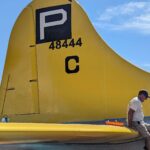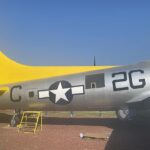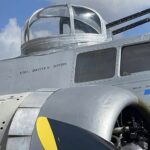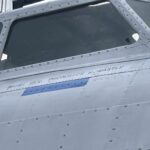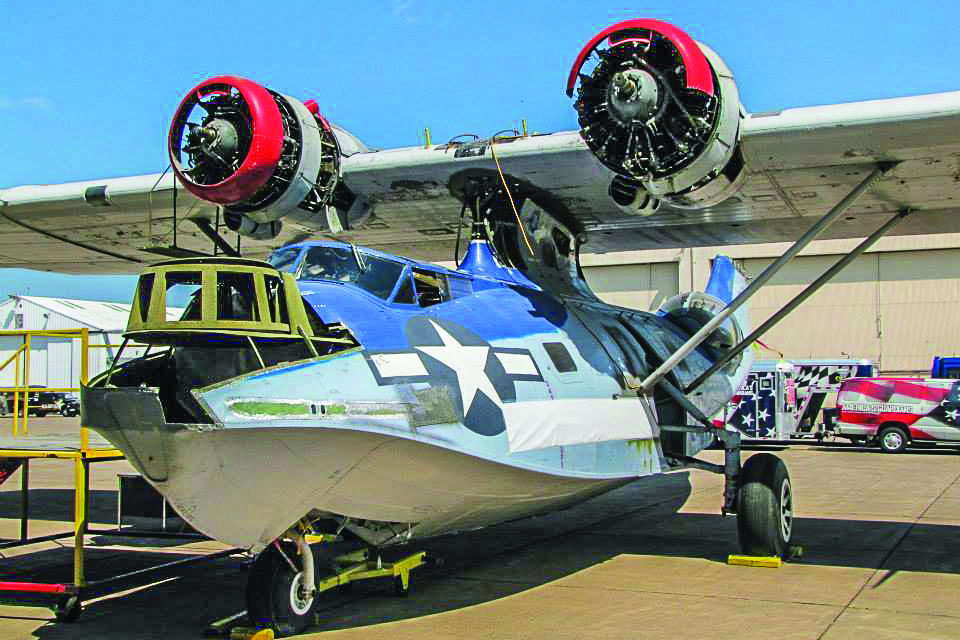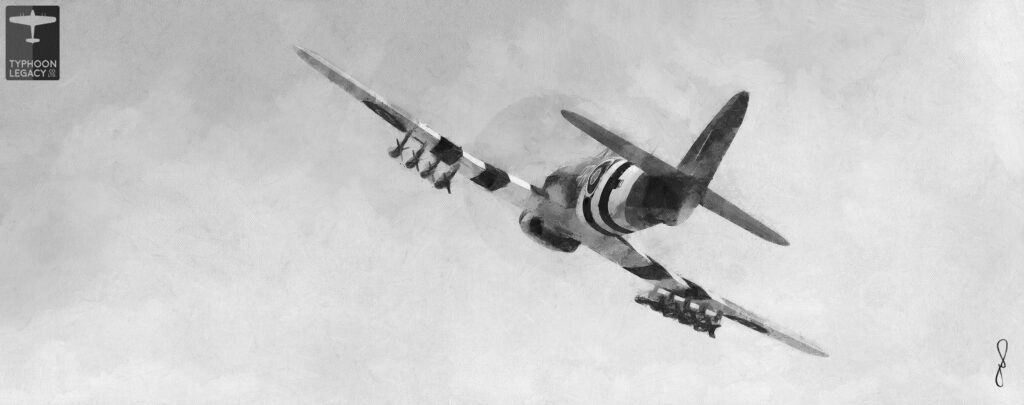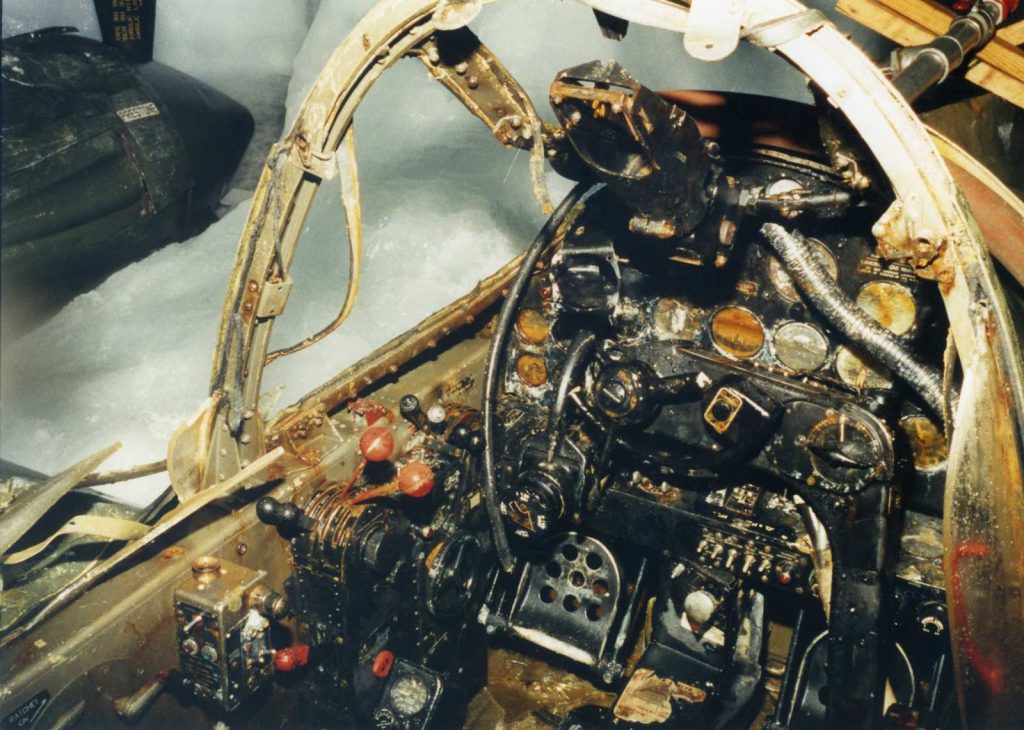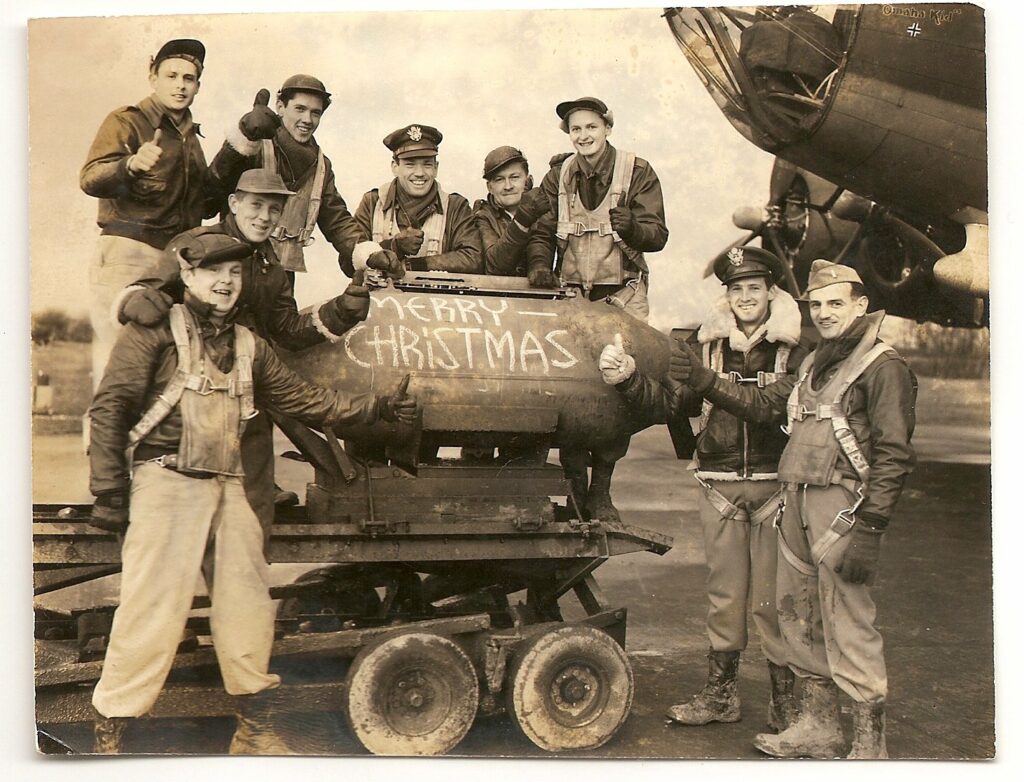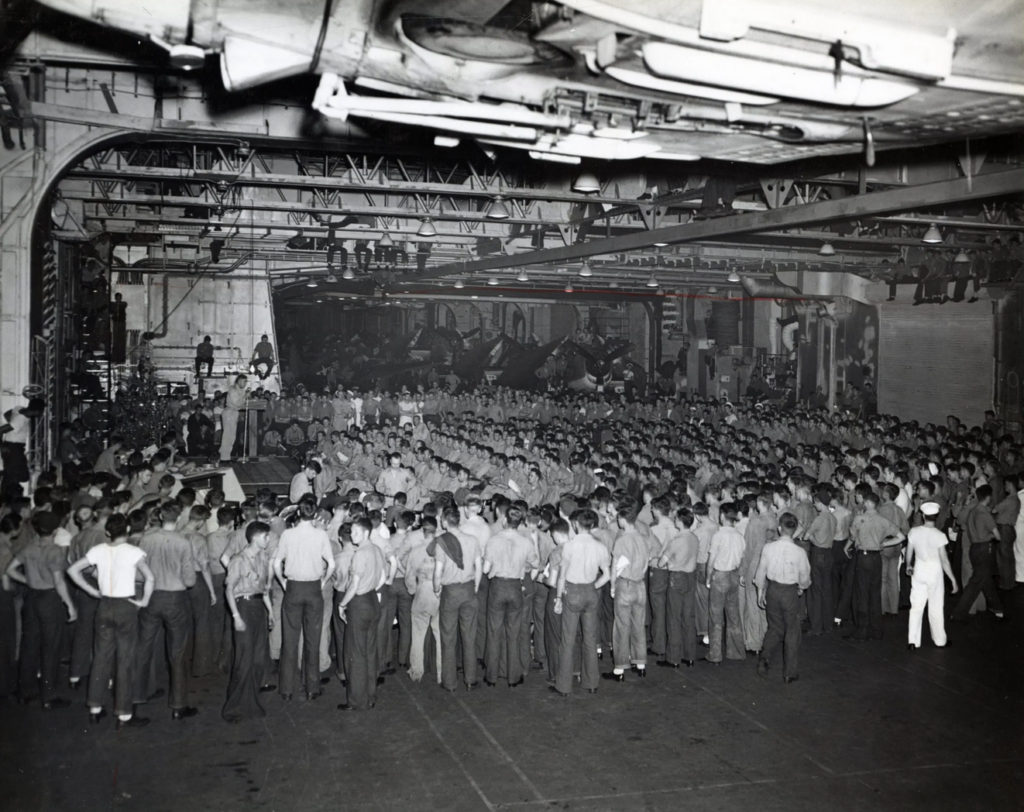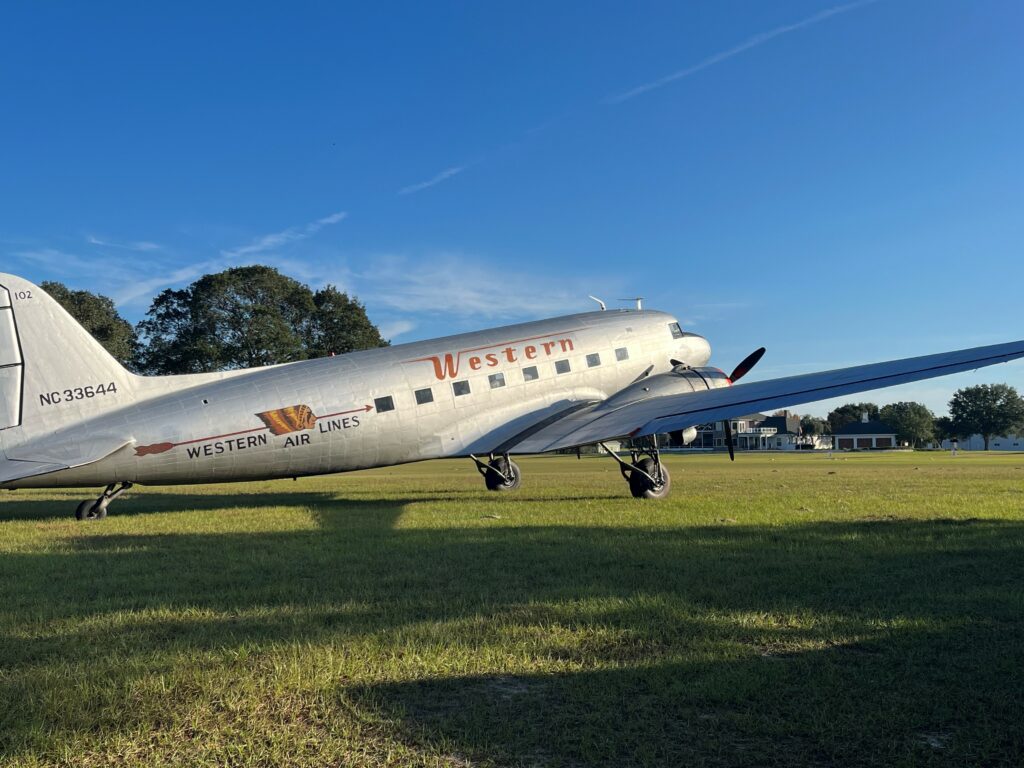by Adam Estes By now, many readers may be familiar with the work that was recently done by a dedicated group of volunteers on B-17G 43-38635 at the Castle Air Museum in Atwater, California, at [...]
by Adam EstesBy now, many readers may be familiar with the work that was recently done by a dedicated group of volunteers on B-17G 43-38635 at the Castle Air Museum in Atwater, California, at the former Castle Air Force Base. This effort is led by Greg Stathatos, a volunteer of the March Field Air Museum (MFAM) in Riverside, California, who has also formed the group known as B-17 Archaeology; the group seeks not only to preserve the memories of those who manufactured, flew, and maintained the B-17 Flying Fortress, but to help preserve surviving examples. Having previously led volunteer restoration efforts on the MFAM’s B-17G 44-6393 “Starduster”, and B-17G 44-85738 (formerly known as “Preston’s Pride”), displayed of California State Route 99 in Tulare and maintained by the town’s local AMVETS chapter, Stathatos has now turned his attention to yet another B-17 displayed outdoors in California: the Castle Air Museum’s 43-38635.
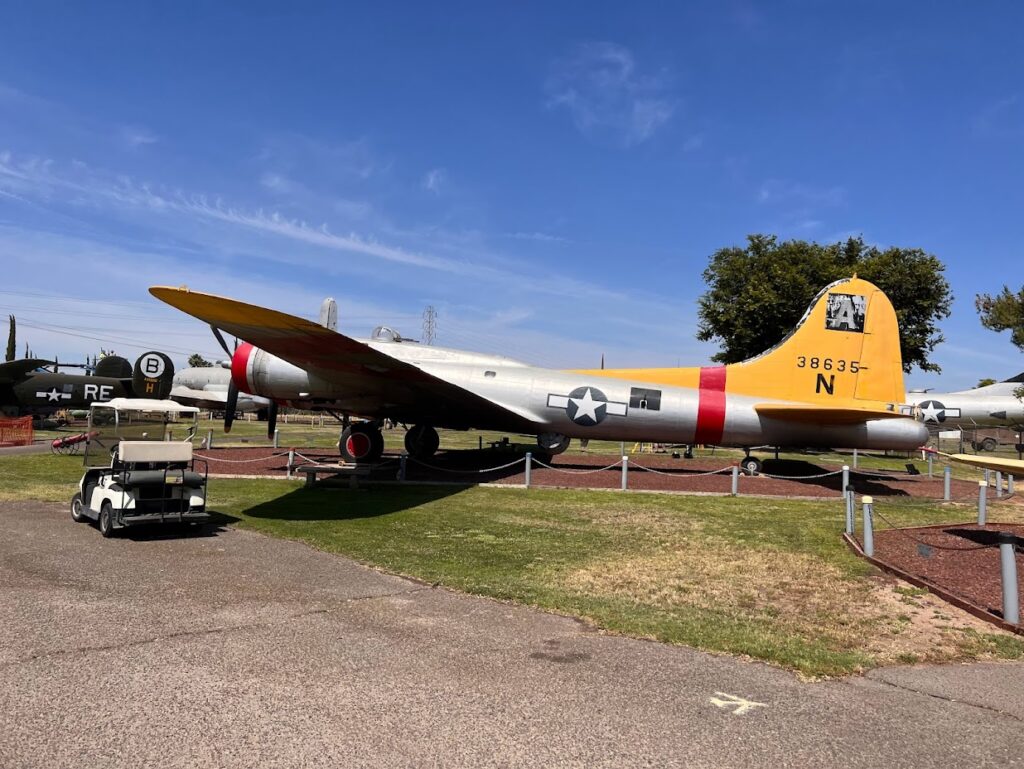
Like many surviving B-17s, 43-38635 was never deployed overseas during WWII, though its story is still worth telling. Rolling off the Boeing production lines in Seattle on August 27, 1944, B-17G-90-BO construction number 9613 was accepted into the United States Army Air Force two days later as 43-38635. Upon its acceptance, it was flown to the United Air Lines Modification Center #10, at Cheyenne Municipal Airport in Wyoming, and was made ready for duty on September 6. That same month, 43-38635 would serve as a testbed for both autopilot research and all-weather flight testing with Honeywell at Minneapolis, Minnesota, and Patterson Field, Dayton, Ohio (which later emerged with Wright Field to form Wright-Patterson Air Force Base), which kept the aircraft from going overseas to Europe. In 1947, it was assigned to the All-Weather Flying Center at Clinton County Army Airfield (now Wilmington Air Park), Ohio. On November 6, 1947, 43-38635 was redesignated as a TB-17G, instead of any specific mission prefix that was available at the time. On February 2, 1949, TB-17G 43-38635 was reassigned to the 2751th Base Group at Griffiss AFB in Rome, New York, and became an EB-17G six days later to denote its role as a long-term research aircraft. April 13, 1949 would see the aircraft become both an ETB-17G and receive a new assignment, this time to the 3171st Electronics Research Group, but remaining at Griffiss until its transfer to the 6520th Base Wing (later Test Wing) at Hanscom AFB in Massachusetts on June 24, 1952, maintaining its role in electronics research until it was placed into storage at Davis-Monthan AFB in Tucson, Arizona, ending its operational career with the United States Air Force.
After seven years in storage at Davis-Monthan, 43-38635 was auctioned to National Metals Company in Phoenix on July 31, 1959, which would both sell or scrap surplus aircraft. During its brief stay with National Metals, 43-38635 was registered with the FAA as N3702G before being sold off on November 14. Having passed through two private owners, the aircraft was sold to Fast-Way Air Service, operated by Edgar Neeley out of Long Beach, California. Fast-Way would convert N3702G into a fire tanker, with two 900-gallon tanks installed in the bomb bay. Thus began N3702G’s career as Tanker 61, with contracts to the California Division of Forestry and the US Forest Service. Throughout the mid-1960s, Tanker 61 operated out of Chino Airport, alongside Fast-Way’s other B-17 tanker, Tanker 78 (N3703G, former USAAF serial 44-83546 and also flown as Tanker 68), which would later become famous as the “Movie Memphis Belle” for its role in the eponymous film of 1990.
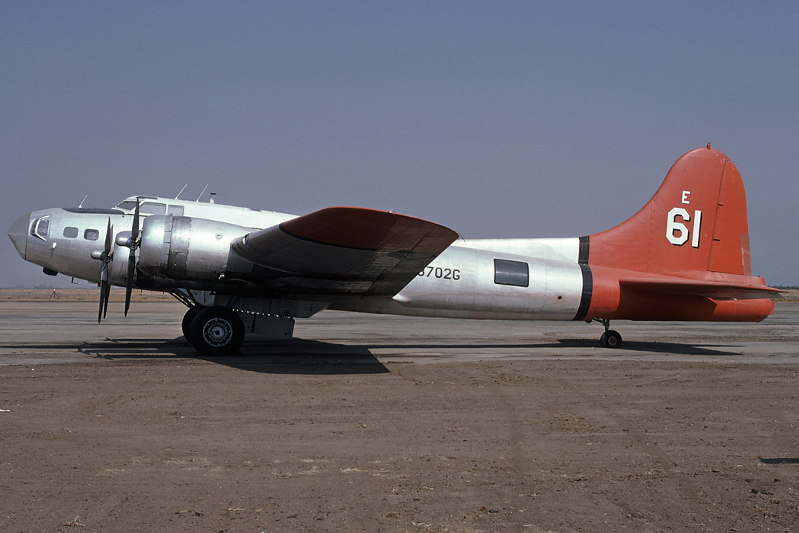
On April 25, 1967, Fast-Way sold its two B-17 tankers to TBM Inc., of Tulare, California. By then, the mighty roar of the B-17’s four radials was just as familiar to forestry workers as the great clouds of smoke and the heat of fire, but as time moved on, the B-17 tankers steadily began to age. It was also around this time that these relics of the Second World War were increasingly sought-after by museums across the country, and so the National Museum of the United States Air Force would facilitate trade deals with tanker operators such as TBM Inc. to acquire aircraft with lower-flight times, such as surplus Douglas C-54s then in storage at Davis-Monthan.
Thus, in 1978, TBM traded its two B-17s to Aero Union in Chico, California for two C-54 fire retardant systems, while Aero Union traded N3702G/Tanker 61 to the Air Force Museum for C-54G 45-556, and N3703G/Tanker 78 went to collector David Tallichet. With 43-38635 now a part of the Air Force Museum’s Loan Program, they decided to send the veteran fire tanker to Castle Air Force Base in Atwater, where a new air museum was being developed. Mechanics at TBM removed the retardant tanks and reinstalled the bomb bay doors before its delivery to Aero Union, and in turn, Aero Union painted the aircraft in the markings of the 94th Bomb Group, which had been commanded by the namesake of the base, Brigadier General Frederick Walker Castle, from June 1943 to April 1944. On the afternoon of November 26, 1979, an Air Force flight crew took B-17G 43-38635 on its final flight to Castle Air Force Base, where museum workers would later install a full set of gun turrets and add the name Virgin’s Delight. The end of the Cold War would see Castle Air Force Base decommissioned by 1995 and becoming a public airport, but the museum would outlive the base, along with the B-17 known until recently as Virgin’s Delight.
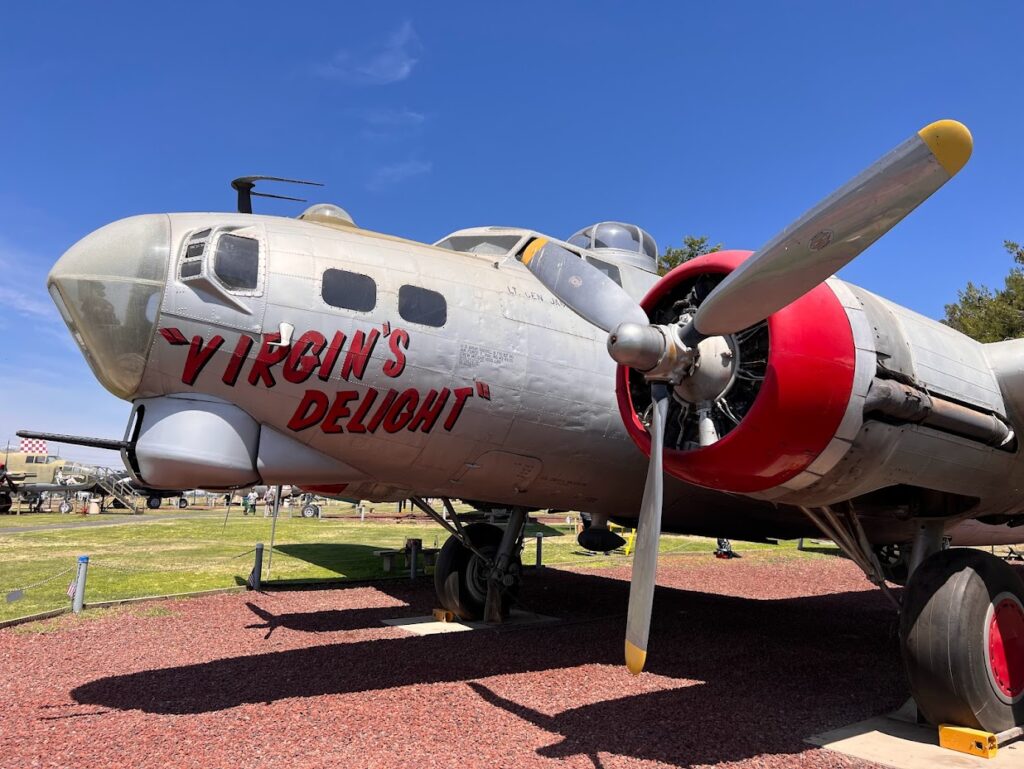
While aircraft displayed outdoors in much of California do not have to deal with nearly as much humidity, rain, snow, or hail as other outdoor displays across the country, sun exposure, blowing dust, and nesting birds all take their toll on the old airplanes, and while the Castle Air Museum staff do what they can, it is a battle of attrition with a limited amount of men and funds.
Enter Stathatos and his volunteers, a mix of museum volunteers and willing participants from near and far. Despite the sweltering summer heat often limiting them to working only during the mornings, the dedication of the team was apparent. They also received help from companies such as Home Depot and Sunbelt Rentals, who loaned equipment, and kept pace with the restoration. Through all of their help, the repaint has now been completed.
In contrast to 44-6393 and 44-85378, which have been repainted as they were at various stages in their service lives, with 44-6393 being repainted to how it appeared when it served as the personal transport for Major General Ira Eaker while he was in command of the Mediterranean Allied Air Forces (MAAF) during WWII, and 44-85378 being repainted to how it appeared as a DB-17G drone controller during the nuclear weapons tests at Bikini Atoll as part of Operation Crossroads in 1946, Stathatos and the museum have elected to repaint B-17G 43-38635 in the markings of a B-17G that saw combat during WWII, and which has a special connection to the namesake of the former air base turned public airport; B-17G 44-8444, Treble Four.
While 43-38635 was built in Seattle by Boeing, the aircraft it now honors was a B-17G-65-VE, manufactured as construction number 17-7844 by the Vega Aircraft Corporation (a subsidiary of Lockheed) at what is referred to today as Hollywood-Burbank Airport in Burbank, California. After being accepted into the USAAF as 44-8444, the aircraft was sent to Lockheed Aircraft Modification Center #3 at Love Field, Dallas, Texas on September 14, 1944. On September 29th, 44-8444 was flown to Hunter Army Airfield, Savannah, Georgia for processing, before starting its journey across the Atlantic from Dow Army Airfield in Bangor, Maine on October 16th. Arriving in England, the aircraft was assigned to the 836th Bombardment Squadron, 487th Bombardment Group, at USAAF Station 137, Lavenham, Suffolk, England on November 20, 1944 as aircraft 2G C. Soon, 44-8444’s crew, led by First Lieutenant Robert W. Harriman, would name the aircraft Treble Four due to the last three digits in its serial number, though they never had any nose art painted. Another distinguishing feature of Treble Four was that in place of the Sperry ball turret, an H2X ground scanning radar had been installed in the States for blind bombing, making the aircraft a Pathfinder (PFF) that often flew at the head of the lead formation.
On Christmas Eve 1944, at the height of the Battle of the Bulge, Treble Four was made lead aircraft on a bomb run to Babenhausen airfield, around 21 miles (35 kilometers) southeast of Frankfurt, Germany. Flying as co-pilot in Treble Four was 36 year-old Brigadier General Frederick Walker Castle, commander of the 4th Combat Bombardment Wing, while the aircraft commander was Treble Four’s regularly-assigned pilot, First Lieutenant Robert W. Harriman. This was General Castle’s 30th mission, and the aircraft’s seventh. En route to the target, 44-8444’s Number 4 engine began losing oil and the bomber struggled to maintain formation while flying over Liège, Belgium. In light of this, General Castle relinquished command to the deputy commander in a separate Pathfinder B-17 and set a course for home. But on the return leg, Treble Four was attacked by multiple Messerschmitt Bf 109s. With no nearby escorting fighters or accompanying B-17s, the two engines on Treble Four’s right wing (Numbers 3 and 4) were hit, and the entire wing caught fire. The bomber’s full complement of bombs remained onboard, but with the possibility of flying over ground forces engaged in battle, General Castle maintained that they were to hold their bombs so as not to inadvertently kill or wound any American ground personnel, though this also meant that Treble Four remained a slower target for the German fighters. As the fire on the wing grew, General Castle and Lieutenant Harriman ordered the crew to bail out, holding the plane steady for the other crew members.
The last time General Castle was seen alive he was at the controls, doing his utmost to keep Treble Four steady for the rest of the crew to bail out. Unfortunately, the tanks in the plane’s right wing exploded with both General Castle and Lieutenant Harriman still onboard. Their heroic last actions, however, ensured that five of the crewmen survived. In recognition of General Castle’s selfless bravery, he earned a posthumous Medal of Honor, presented by President Harry S. Truman on February 28, 1946, just one month after Merced Army Airfield was renamed Castle Field on January 17, and later Castle Air Force Base in his honor.
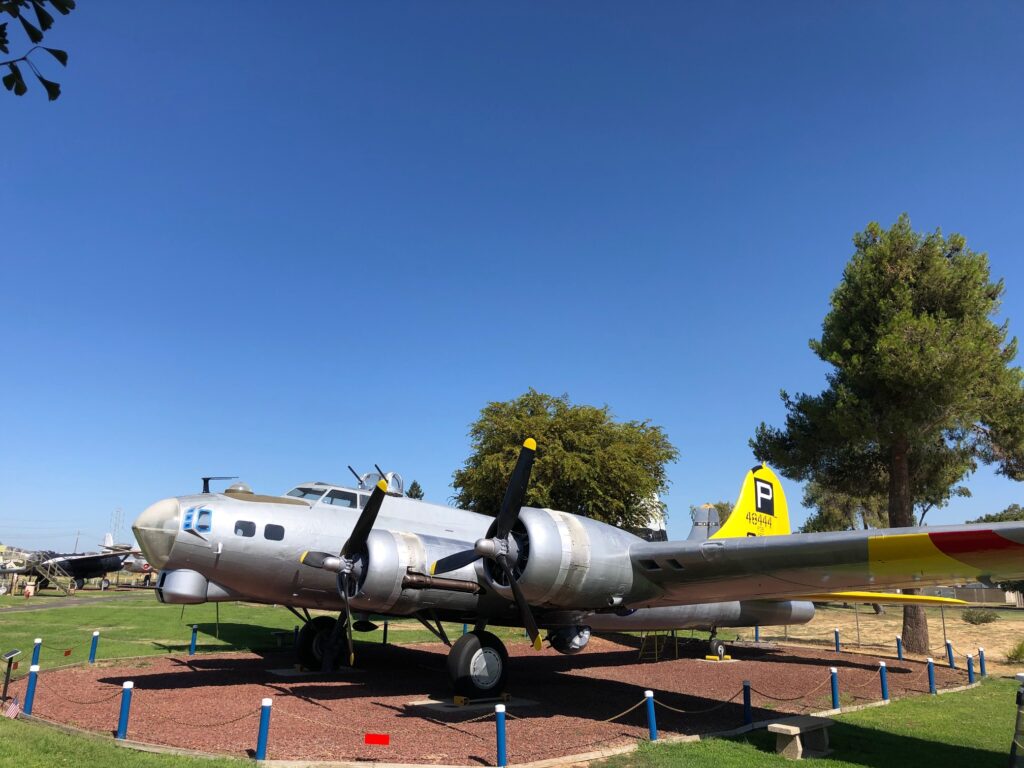
It is truly fitting for the B-17 formerly known as Virgin’s Delight to become Treble Four. What is more, it is expected that with the Castle Air Museum now raising funds for a new Aviation Pavilion, B-17G 43-38635 will become one of several aircraft that may be placed indoors at the museum. To support both the Castle Air Museum and B-17 Archaeology, please visit Welcome to Castle Air Museum and Home – B-17 Archaeology (b17archaeology.com) and follow their social media pages B-17 Archaeology – YouTube, Facebook.



